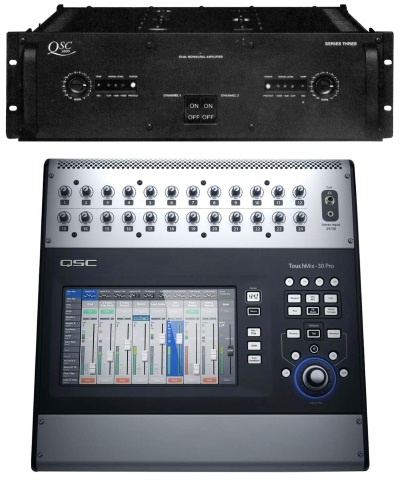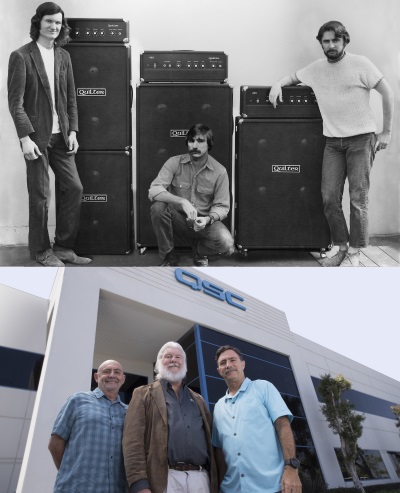
Building The Roots
From the beginning, partnership has provided dividends. The story of QSC began in 1968 in Costa Mesa, when Barry Andrews’ motorcycle broke down in an industrial park. While waiting for a friend to pick him up, he struck up a conversation with a guy working in a nearby garage.
The “guy” was Pat Quilter, who had a fledgling business designing and building various types of amplifiers. It quickly became apparent to the two that Barry’s experience in building speaker cabinets was a natural complement to Pat’s efforts so the two joined forces, working out of an 800-square-foot shop. Yet while attaining some early success, such as placing their guitar amps at clubs on the Sunset Strip in LA, an inability to sell and manufacture product simultaneously in enough volume to meet demand along with negative cash flow proved daunting to the fledgling operation.

Bringing aboard Barry’s brother John handle the business side of the equation provided more time for design and manufacturing, allowing the pair to focus on improving their skills, designs and gear while also adapting to the changing marketplace. In fact, the founders have often cited their failure to succeed immediately as a key factor in their later success.
By the early 1970s, established companies had pretty much cornered the market on instrument amplifiers, but as demand for professional audio equipment grew, the partners transitioned to building power amplifiers to drive ever-larger loudspeaker systems.
Ultimately QSC inked successful OEM agreements with the likes of Mitchell and Furman, and then made its first public outing as a manufacturer at the NAMM Show in 1977. By 1979, QSC had filed its first patent for Quilter’s AC-coupled circuit topology while also marking the initial year the company exceeded $1 million in sales.
The partners set their sights on building an amplifier that could appeal to the emerging installation market, and the result was the Series Three. It combined innovative features such as convection cooling, step-linear output circuitry and removable channel modules into a low-profile package that earned the acceptance of the higher end of the market. The subsequent Series One extended the company’s reach even further, providing the performance quality of the Series Three in an affordable, fan-cooled package.
As the 1980s began, the movie industry had begun to awaken to the impact of audio, and QSC struck an OEM deal with Dolby Labs to provide rack-mounted amplifiers. As a result, those amps found their way into movie theaters across the nation, and as time progressed, the company began to build up the cinema side of its business.
As more design and install firms began routinely mixing technology from different manufacturers in concert and installed sound applications, and the trend toward higher quality cinema audio became ever more firmly entrenched in the film industry, QSC developed new amplifiers to meet evolving practical and performance concerns industry wide. Anticipating the future, the company also adopted an “open architecture” design, providing greater capacity for fluent interfacing between various technologies that led to developments such as the unique Thermal Management System and internal Peak Limiting of the EX Series.
Even further, a deep commitment to research and development in DSP and networking positioned QSC for the wave of digital equipment hitting the market in the 1990s. Significant innovations in that time period include PowerLight Series amplifiers with patented PowerLight high-speed switching supply technology, QSControl computer control and monitoring, and in 1998, Routing Audio Via Ethernet (RAVE) that distributed 64 channels of digital audio over Ethernet.
